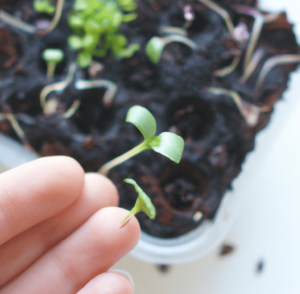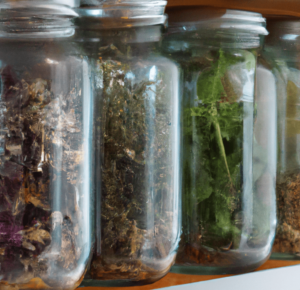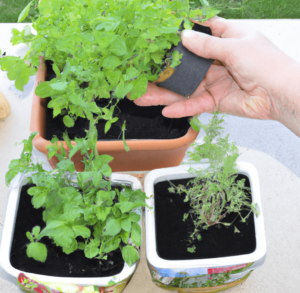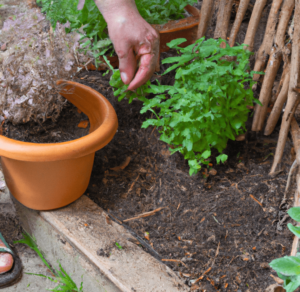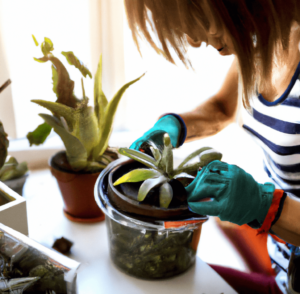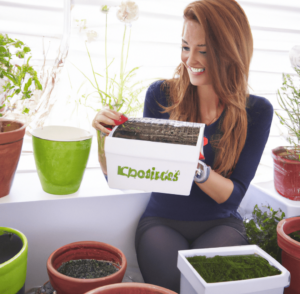Growing plants in pots or containers as opposed to the ground is referred to as container gardening. It’s practical and flexible gardening, particularly for individuals with little outdoor areas. Even if your balcony or patio is modest, you can create a lovely and fruitful garden by using containers.
Whether you’re a novice or have some gardening expertise, this guide will provide you with the skills and information you need on container gardening for beginners.
Choosing Containers
In order to cultivate healthy plants, selecting the appropriate containers for container gardening is an essential step. Whether you intend to produce a mini flower, vegetable, or herb garden, the container’s size, material, and quality should be appropriate for the sort of plants you intend to cultivate.
Types of Containers (e.g. Plastic, Terracotta, Wood)
The following are a few of the most typical container types used in container gardening for beginners:
- Plastic packaging is affordable, lightweight, and strong. They are a wonderful option for plants that prefer regularly moist soil because they also retain moisture efficiently.
- Clay is used to making terracotta pots, which are porous and allow for adequate airflow and water evaporation. For plants that prefer soil that drains well, they are a suitable option.
- Wooden containers look nice and give roots decent insulation. However, they will need more frequent watering because they are more porous than terra cotta or plastic pots.
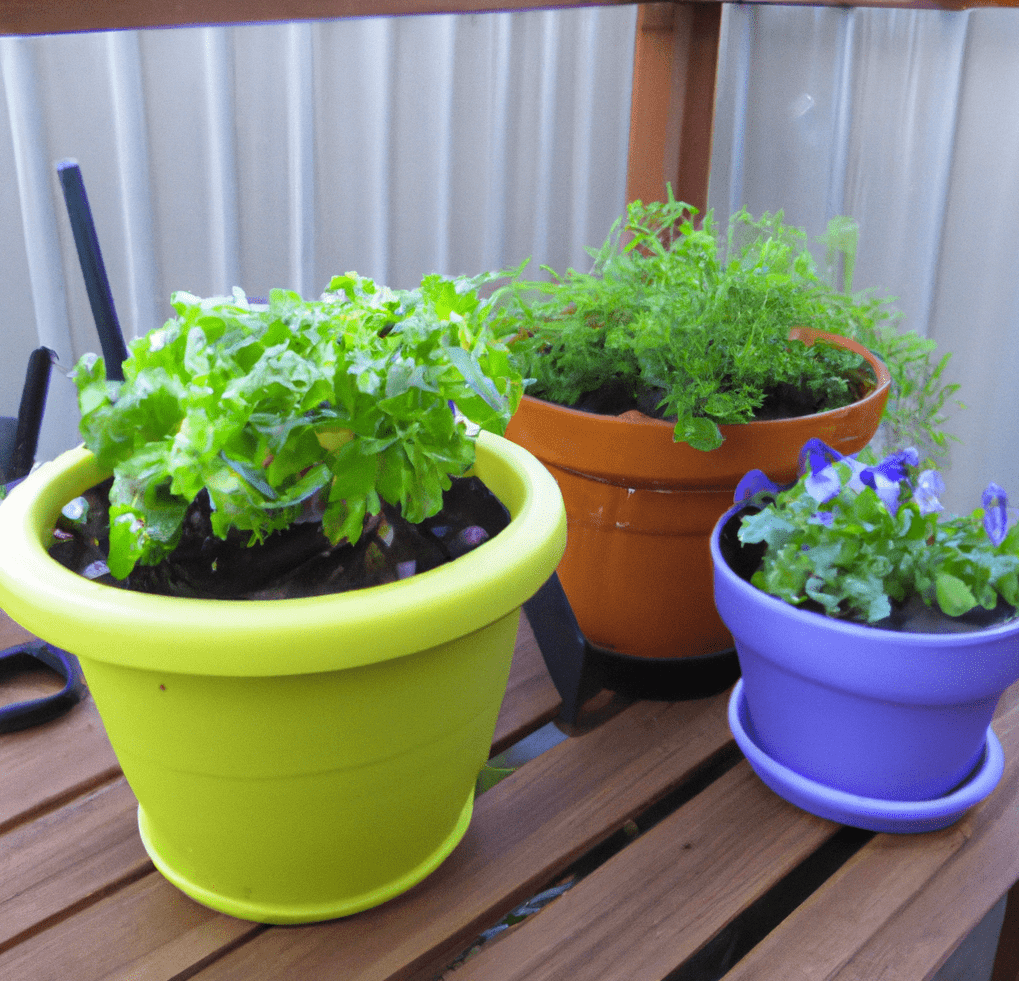
Size and Shape of Containers
When choosing the size and style of containers for your container garden, keep the following in mind:
- Size: Pick a container that is big enough to fit your plants’ root systems. The container’s size will be determined by the size of the plants you are cultivating.
- Shape: The container’s shape will affect how much soil and water it can hold and how much sunlight it can receive. Small plants do better in round pots, whereas larger plants do better in longer, rectangular containers.
- Root Space: Ensure that the container has adequate room for the roots of your plants to expand as they grow.
- Weight: Take into account the container’s weight when it is full of soil and plants, especially if you intend to move it about.
Drainage Considerations
Because containers lack the same natural drainage system as a typical garden, proper drainage is essential for container gardening. Without sufficient drainage, water can accumulate in the container, causing root rot and the eventual death of your plants.
When it comes to drainage in container gardening, keep the following points in this gardening guide in mind:
- Drainage Holes: Verify that there are enough drainage holes in the container. These pores let the extra water drain, keeping the soil from getting soggy. You can make your own drainage holes if the container doesn’t already have any.
- Soil: Fill your container with high-quality, well-draining soil. This will lessen the likelihood of water collecting in the container’s bottom.
Preparing the Soil
For container gardening for beginners to be successful, the soil must be prepared correctly. Pick a high-quality, well-draining soil mixture, and for additional nutrients, add fertilizer or compost. By adding perlite or sand, you can improve drainage. You should also check the soil moisture frequently to maintain it moist but not saturated. Your plants will benefit from having a solid basis for growth, which will enable them to flourish in the light.
Types of Soil for Container Gardening
The most typical types of soil for container gardening that are listed below will offer your plants the ideal growing circumstances because different plants have varied soil requirements:
- Garden dirt: While it can be used in pots, garden soil frequently weighs too much and drains poorly for plants to grow. If you decide to utilize garden soil, be sure to increase drainage by incorporating perlite or sand.
- Compost: Compost can be put into garden soil or potting soil to enhance the soil’s quality and supply more nutrients for your plants.
- Soilless mix: Peat moss, vermiculite, and perlite are combined sterilely to create a soilless mix. It is frequently used to start seeds or grow plants that need a lot of drainage in the soil.
How to Amend Soil for Container Gardening
In container gardening for beginners, it’s important to know how to adjust your soil for the better. The following advice will help you improve the soil in your container garden:
- Compost or a balanced fertilizer can be used to provide your plants with more nutrients. For long-lasting nutrient delivery, take into account employing slow-release fertilizers.
- Increased Drainage To enhance drainage and avoid compaction of the soil, mix in perlite or sand.
- Check the pH of the soil to make sure it is in the right range for your plants. Add sulfur or lime if necessary to change the pH.
- Aerate the soil frequently to avoid compaction and enhance root growth.
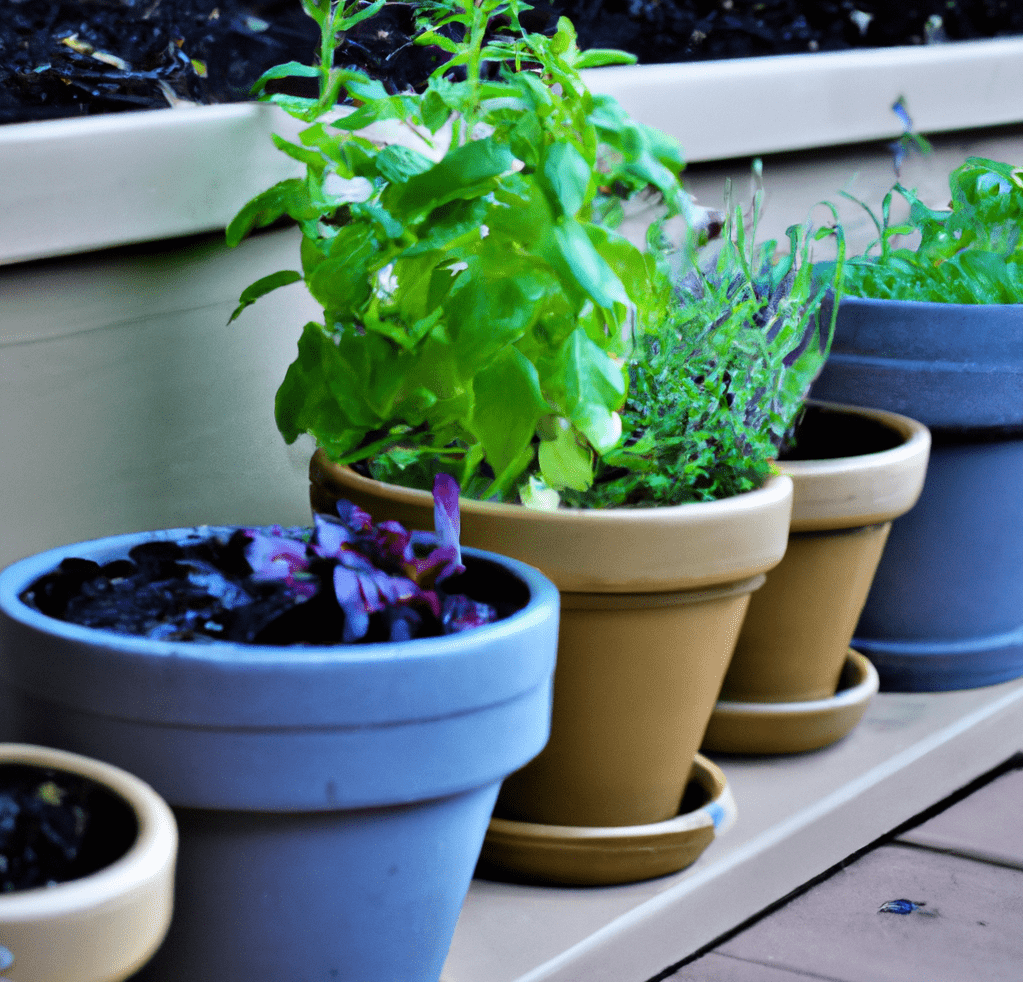
Fertilizing Container Plants
Container gardening for beginners includes choosing a balanced fertilizer that offers the essential nutrients for the plants you are growing, and applying it according to the directions on the container. Utilizing too much fertilizer might be detrimental, therefore it’s crucial to do so. Water your plants thoroughly after fertilizing to ensure that the nutrients are distributed evenly in the soil. A container garden that is healthy and prolific will benefit from regular fertilization.
Choosing Plants
A critical step in planning a successful garden is selecting the appropriate plants for container gardening. Take into account the plants’ size, growth patterns, and water and sunlight needs. Pick plants that can thrive in the conditions you can offer and are ideal for growing in pots. When selecting plants, don’t forget to take into account the overall aesthetic and style of your garden. You can choose plants that will provide a lovely and useful container garden by giving it serious thought.
Sunlight Requirements
Container plants need sunlight to develop and stay healthy. Because some plants require more sunshine than others, it’s critical for beginners to learn the precise sunlight requirements for each plant. Prior to planting, be careful to pick a place that will provide your plants with the appropriate amount of sunshine. To ensure that containers receive the ideal amount of sunlight, you can, if required, relocate them to various areas during the day. Remember that too much or too little sun can harm your plants just as much, so keep an eye on them and adjust as necessary.
Choosing Plants That Will Thrive in a Container Environment
It’s crucial to choose varieties of plants in container gardening for beginners that will flourish in this setting. Think about how much soil, water, and sun the plants will get. Herbs, veggies, and miniature flowers are a few plants that do well in containers. Avoid plants with strong root systems because they could easily exceed their containers. Select plants that will give your garden the desired appearance and that can grow and thrive in the conditions you can offer.
Companion Planting
In the practice of companion planting, specific plants are grown side by side for mutual benefit. Companion planting has a number of advantages for container gardening, including better plant development, higher pollination, and fewer pest issues. You can design a harmonious and flourishing container gardening carefully choosing plants whose growth habits and requirements complement one another. For instance, after learning about container gardening for beginners, you can grow herbs with veggies to serve as natural pest management or pair vegetables with floral plants to draw pollinators.
Planting and Care
Like other types of gardening, container gardening for beginners needs care. Pay attention to the precise instructions for the plants you have chosen, such as how much sunlight and water they require. To continuously nourish the soil, think about applying a slow-release fertilizer. Also, make sure to routinely inspect the area for pests and diseases. Your container garden will remain healthy and productive with regular maintenance like pruning, deadheading, and weeding. Your container garden may supply you with delicious food and lovely flowers for many years if you take good care of it.
How to Plant in a Container
Here’s basic container gardening for beginners:
- Decide on a suitable container first, taking into account its size, shape, and composition.
- After that, add some well-draining soil and make any adjustments required to make it suited for your plants.
- Once you’ve chosen the plants you want to cultivate, place them in the container, being sure to leave space for growth and enough light for each one.
- Finally, water your new container garden and keep giving your plants the sunlight, water, and fertilizer they need.
Your container garden will develop and thrive if you take good care of it.
Watering and Fertilizing Container Plants
Your container garden must be fertilized and watered correctly to succeed so here are our tips:
- Plants in containers have less soil than plants in a regular garden, so they dry out more quickly. Check the soil frequently, and water when it feels dry to the touch, to make sure your plants are getting enough water. To avoid root rot, moisten the soil well and then let the excess liquid drain away.
- To give container plants the nutrition they need for healthy growth, fertilizing is also essential. Pick a fertilizer that is balanced and water-soluble, then apply it according to the directions.
- During the growing season, fertilize your plants every 4 to 6 weeks, adjusting the frequency based on the particular requirements of your plants.
Common Pests and Diseases to Watch Out for
Container gardening is a fantastic method to grow food, flowers, and other plants in a small space. The most common pests and diseases to look out for after learning about container gardening for beginners include:
- The sap from plant leaves and stems can be sucked by aphids, which are tiny, soft-bodied insects that can cause yellowing, wilting, and stunted development in plants.
- Slugs and snails in a container garden because these mollusks can quickly eat leaves, stems, and seedlings.
- In the humid environment of a container garden, diseases like powdery mildew and gray mold can flourish, turning the foliage yellow, wilting, and dropping.
- Root rot, which can cause plants to wilt, become yellow, and eventually die, is a result of overwatering or poorly draining soil.
- Tomato plants in container gardens are susceptible to both early and late blight, which results in yellow leaves, slowed development, and withering.
- A fungus disease called powdery mildew can cause yellowing and reduced development in a variety of plants.
- Verticillium wilt is a soil-borne fungus that can kill plants planted in containers, including tomatoes, peppers, eggplants, and others, by causing wilting, yellowing, and other symptoms.
Bottom Line: Container Gardening for Beginners
Even if you don’t have a typical garden, you can still enjoy cultivating plants by engaging in container gardening. Anywhere can be turned into a garden, and a large range of plants can be grown there by using containers of different sizes and materials. Container gardening gives everybody the chance to try their hand at growing their own plants and allows you to bring a little bit of nature into your house or outside space. You can have a flourishing container garden in no time with a few simple tools, some carefully picked plants, and some care and attention.
Container Gardening for Beginners FAQs
What does container gardening mean?
Growing plants in pots or other containers as opposed to the ground are known as container gardening. For those with little available outside area, it offers a useful and flexible method for growing a garden.
What advantages does container gardening offer?
There are several benefits to container gardening, including the flexibility with which plants can be moved, the ease with which soil, water, and light are managed, and the capacity to grow a garden even in small outdoor locations.
What factors should I take into account when selecting containers for container gardening?
When choosing containers, take into account the material, durability, and ability to withstand varied weather conditions of the container, as well as its drainage, as well as size, and style appropriate for the plants you wish to cultivate.
What types of containers are available for use in container gardening?
A few of the kinds of the most popular materials for containers in container gardening include plastic, terracotta, and wood. Each offers a unique set of advantages and disadvantages.
How do my plants’ container size and shape affect them?
A plant’s ability to access soil, water, and nutrients as well as how much space it has to grow depends on the size and form of the container. Select a container that has enough root space for your plant, is large enough for its root system, and can store enough soil and water.
What drainage issues need to be taken into account during container gardening?
Make sure the container is filled with top-notch, freely draining soil and has an adequate number of drainage holes.
How do I get the soil ready for container gardening?
Pick a top-notch, well-draining soil mix, then add compost or fertilizer for extra nutrients. Container gardening can be successful if drainage is improved by adding perlite or sand and the soil moisture level is maintained.
What sorts of soil are available for container gardening?
A few of the most popular types of soil for container gardening include peat moss, compost, garden soil, and potting soil. Because different plants have varied soil needs, pick the soil that will give your plants the best growing conditions.
Why is fertilizer crucial for plants in containers?
Because fertilization supplies container plants with vital nutrients, it is crucial for their growth and health.
How do I pick the best fertilizer for plants in containers?
Pick a fertilizer that is balanced and provides the precise nutrients your plants need, then use it as directed on the container. For example, planting herbs for beginners will look different than a potted vegetable garden.
What factors should I take into account when selecting plants for container gardening?
When choosing plants for container gardening, take into account their size, location, growth habits, water, and sunlight requirements, and fit with your garden’s general design.
What kind of sunlight do plants in containers need?
In order to grow and maintain health, container plants require sunlight. It’s critical to understand each plant’s specific needs for sunlight and choose a location that will give them that sunlight.
Which plants grow best in containers for gardening?
A few plants that thrive in pots are herbs, veggies, and little flowers. Pick plants with growth patterns that work well for container gardening and that will thrive in the conditions you can offer.
What is companion planting?
Companion planting is the technique of cultivating particular plants close to one another for mutual benefits, such as enhanced plant growth, increased pollination, and reduced pest problems.
What common pests and illnesses should container gardeners be on the lookout for?
Aphids, slugs, snails, fungal diseases, spider mites, mealybugs, root rot, and other pests and illnesses are some of the frequent ones in container gardening which is why it’s important to learn pest control for beginners.


